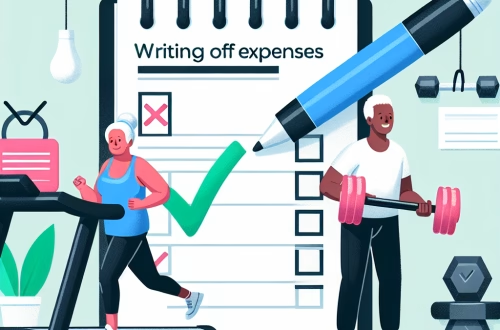Year-End Tax Planning Tips For Small Businesses
Article Summary
Year-end tax planning is critical for small businesses operating in the United States, as strategic decisions made before December 31 can significantly reduce federal and state tax liabilities. Businesses with net incomes under $100,000, pass-through entities (e.g., S-corps and LLCs), and sole proprietorships face unique challenges like estimated tax payment thresholds, Section 179 depreciation limits, and state nexus complexities. Failure to optimize deductions, credits, or deferral strategies may trigger IRS underpayment penalties (IRC §6654), missed R&D tax credit opportunities, or unfavorable tax treatment of inventory under Section 471. Proactive planning also mitigates cascading issues like unreasonable compensation audits for S-corp shareholders or California’s $800 minimum franchise tax.
What This Means for You:
- Immediate Action: Review Q4 estimated tax payments to avoid underpayment penalties (26 U.S.C. §6654(d)(1)(B)).
- Financial Risks: Excess shareholder compensation in S-corps may trigger payroll tax audits (IRS Topic No. 717).
- Costs Involved: Late-filing penalties for 1099-NEC forms reach $60 per return (IRC §6721).
- Long-Term Strategy: Align state apportionment methodologies (e.g., California’s single-sales factor) with entity structure.
Explained: Year-End Tax Planning Tips For Small Businesses
Under 26 U.S.C. §162(a), businesses may deduct “ordinary and necessary” expenses incurred within the tax year, including wages, rent, utilities, and supplies. The IRS defines “ordinary” as common in the industry, while “necessary” implies appropriate (not indispensable) for operations. State laws vary: California (R&TC §17201) conforms to federal deductions but limits net operating loss (NOL) carryforwards to 80% of taxable income. Conversely, Texas imposes no income tax but maintains a 0.375% gross receipts tax (Margin Tax) with its own deduction rules under Tex. Tax Code §171.1011.
”Year-End Tax Planning Tips For Small Businesses” Principles:
The “ordinary and necessary” test (26 CFR §1.162-1) governs expense deductibility. For example, a bakery may fully deduct flour purchases but cannot deduct country club memberships unless proven client-related (subject to 50% limitation under IRC §274(a)(2)). Mixed-use assets like vehicles require strict mileage logs under IRC §274(d), apportioning business vs. personal use via the standard mileage rate (67¢/mile for 2024) or actual expense method. Home office deductions (IRC §280A) mandate exclusive business use and principal-place-of-business requirements.
Standard Deduction vs. Itemized Deductions:
Businesses do not claim standard deductions—they itemize all qualifying expenses on Schedule C (sole proprietors), Form 1120-S (S-corps), or Form 1065 (partnerships). However, owners must choose between itemizing personal deductions (e.g., mortgage interest under IRC §163(h)(3)) or taking the standard deduction ($13,850 single/$27,700 joint for 2023). Pass-through entities (PTEs) in 17 states—including Arizona and Louisiana—now elect entity-level state taxes paid (SALT cap workaround), deductible federally under IRC §164.
Types of Categories for Small Businesses:
Accelerated depreciation options dominate year-end planning: Section 179 (IRC §179(b)(1)) permits immediate expensing of $1.16M (2023) in equipment purchases, phasing out dollar-for-dollar above $2.89M. Bonus depreciation dropped to 80% for 2023 assets (IRC §168(k)), disappearing by 2027. Cash-basis businesses (IRC §448) may prepay 2024 rent or utilities in December for 2023 deductions, while inventory-based businesses can trigger LIFO liquidations to reduce taxable income. State-level R&D credits (e.g., New York’s 9% under N.Y. Tax Law §41) often require federal Form 6765 filing.
Key Business and Small Business Provisions:
Retirement Contributions: Solo 401(k) plans allow $66,000 employer contributions ($73,500 if over 50) if established by Dec 31 (IRC §402(g)). Accrued Expenses: Bonuses paid within 2.5 months of year-end are deductible in the accrual year (IRC §404(a)(5)). Bad Debt: Nonaccrual-experience method under IRC §448(d)(5) requires documented collection history. State Taxes: Thirteen states require composite PTE filings (e.g., Pennsylvania RCT-101) by Dec 31 for deduction eligibility.
Record-Keeping and Substantiation Requirements:
Federal law (26 CFR §1.6001-1(a)) requires retaining receipts, invoices, and bank statements for three years after filing. Travel expenses under IRC §274(d)(1) require logs noting dates, locations, attendees, and business purpose. Digital records must be retrievable per Rev. Proc. 97-22. During audits, insufficient records trigger full expense disallowance except under the Cohan Rule (applying estimates only if credible evidence exists).
Audit Process:
IRS audits (Internal Revenue Manual 4.10.2) typically start with CP2000 notices for mismatched 1099s/W-2s. Field audits examine expense substantiation, especially for vehicles, meals (limited to 50%), and home offices. Common triggers include disproportionate losses (hobby loss rule under IRC §183) or excessive deductions relative to income. The IRS may impose accuracy-related penalties (20% under IRC §6662) for negligence, but CPAs can negotiate penalty abatement via Reasonable Cause defense.
Choosing a Tax Professional:
Select Enrolled Agents (EAs), CPAs, or tax attorneys with specific small business expertise. Verify PTIN credentials via IRS Directory and inquire about state nexus experience (e.g., California’s economic nexus thresholds under R&TC §23101(b)). Professionals should provide engagement letters outlining audit defense provisions, given that 1.0% of S-corps face annual audits per IRS Data Book 2022.
Laws and Regulations:
Federal: Section 461(l) limits business loss deductions to $289,900 (single)/$579,800 (joint) for noncorporate taxpayers (IRC §461(l)(B)). California: FTB disallows federal bonus depreciation—requires addback via Schedule CA (540). New York: Metropolitan Commuter Transportation Mobility Tax (MCTMT) applies at 0.34% for payrolls over $50K. IRS Publications: Refer to Publication 535 (business expenses), Publication 587 (home offices), and Publication 334 (small business guide).
People Also Ask:
“Can I deduct my home internet for my LLC?”
Yes, if used >50% for business under IRC §262(b). Allocate via square footage percentage (office/total home) or actual usage logs. California imposes stricter documentation requirements per FTB Pub. 1015.
“Does buying equipment in December help taxes?”
Immediate expensing via Section 179 is permitted if equipment is “placed in service” by Dec 31—defined as operational per IRS Rev. Proc. 2023-15. Leased equipment qualifies if active by year-end.
“How do state taxes affect year-end planning?”
High-tax states (e.g., NY, CA) require separate estimated payments to avoid underpayment penalties. PTEs in SALT-cap states (IRC §164(b)(6)) should pay entity-level taxes by Dec 31 for federal deductions.
“Can I deduct meals with clients?”
50% deductible under IRC §274(n)(1) if business-related (discussed deals, contracts). Keep receipts noting attendee names and business purpose per IRS Notice 2021-63.
“What records do I need for vehicle deductions?”
Track mileage dates/purposes via apps (e.g., QuickBooks Mileage) or paper logs. For actual expenses (IRC §162(a)(3)), retain fuel receipts, repair invoices, and lease agreements.
Extra Information:
• IRS Publication 535: Deductible business expenses (https://www.irs.gov/pub/irs-pdf/p535.pdf)
• California FTB Guidelines: Small business tax obligations (https://www.ftb.ca.gov)
• NASE Small Business Tax Center: State-specific deduction guides (https://www.nase.org)
Expert Opinion:
Failure to implement year-end tax strategies risks permanent loss of deductions, overpayment of state/federal taxes, and increased audit exposure. Small businesses must reconcile federal provisions like Section 179 with nonconforming state laws, particularly in California, New York, and Texas, where aggressive enforcement targets cash-heavy industries.
Key Terms:
- 2024 Section 179 deduction dollar limits
- State-specific small business tax credits
- SALT cap workaround for pass-through entities
- IRS Section 274 business meals substantiation
- Accrual vs. cash basis tax planning deadlines
- California franchise tax compliance requirements
- Year-end retirement contribution limits for sole proprietors
*featured image sourced by Pixabay.com





